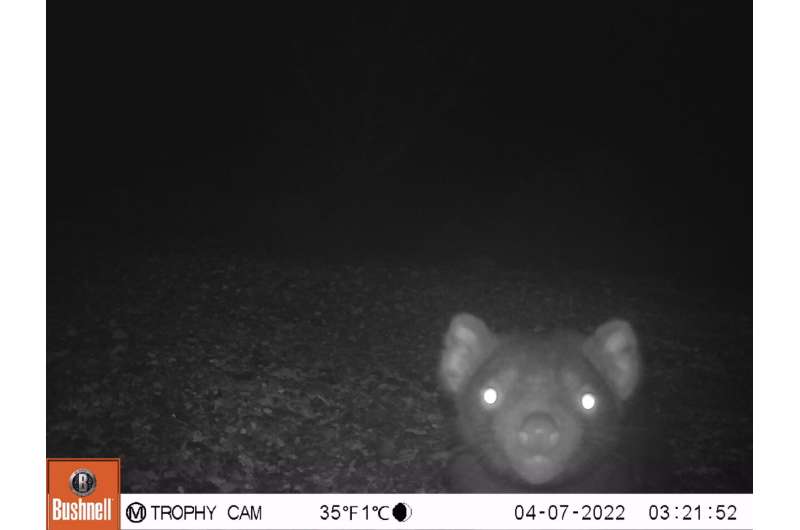
Scientists at the University of Tasmania are using groundbreaking artificial intelligence (AI) technology to tackle the spread of Devil Facial Tumor 2 (DFT2).
This innovative project, led by Dr. Rodrigo Hamede and Professor Barry Brook at the School of Natural Sciences, aims to transform how scientists monitor and manage wildlife diseases. With potential applications extending beyond Tasmanian devils, it could revolutionize wildlife disease management globally.
DFT2, the second transmissible cancer affecting Tasmanian devils, was discovered in 2014 near Cygnet on the D’Entrecasteaux Peninsula. The disease has steadily spread across southeastern Tasmania. In November 2022, the disease was detected for the first time outside of the peninsula, raising concerns about its accelerating spread.
To combat this, the project combines data from remote cameras and AI software to process thousands of images and identify diseased individuals in real time.
“This technology is a game-changer,” Dr. Hamede said. Our AI software can rapidly process images of Tasmanian devils captured by the cameras through a three-step process.
“The AI first separates animal images from blanks, then determines the species, and finally distinguishes between healthy devils and those with tumors. Using advanced computer-vision techniques, we can monitor the disease’s progression much faster than human labeling, without compromising accuracy.”
The insights from this project will help inform timely interventions and could serve as a model for tackling other wildlife diseases.
“Our approach merges traditional methods with advanced sensor-based monitoring and AI technology,” said Professor Brook.
“This project could significantly change how we manage wildlife diseases, both in Tasmania and around the world. The use of AI allows for more responsive detections and interventions by eliminating the time lag caused when experts need to manually process all the images.”
A key part of the project is involving local landowners and community members. By working together with local councils, government and non-government organizations, and existing schemes like the Land for Wildlife Scheme and Tasmanian Land Conservancy, the project aims to create a community-based monitoring network.
“Community support is vital. By working together, we can make a real difference in managing wild devil populations affected by the disease,” emphasized Dr. Hamede.
“We are calling for landowners from the Huon Valley and Derwent Valley to sign up for our project so we can deploy cameras on their properties.”
“The more people sign up for our project, the better we can monitor DFT2 spread and effects. Their participation provides valuable data, raises awareness, and fosters a collective effort to combat DFT2.”
This new methodology is set to become the standard approach to monitor devil populations and DFTD infection dynamics across Tasmania. It will improve our capacity to assess and deliver relevant conservation strategies in a cost-effective and time-efficient manner.
Citation:
Using AI to save the Tasmanian devil (2024, June 27)
retrieved 27 June 2024
from https://phys.org/news/2024-06-ai-tasmanian-devil.html
This document is subject to copyright. Apart from any fair dealing for the purpose of private study or research, no
part may be reproduced without the written permission. The content is provided for information purposes only.







